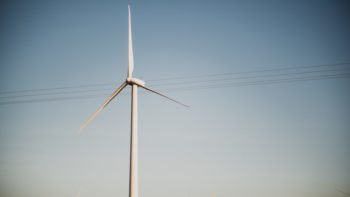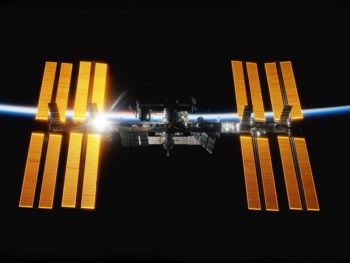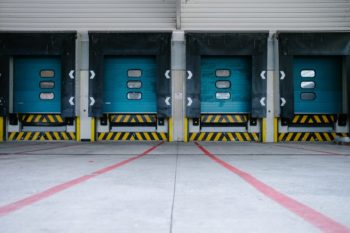News – Blog
Five promising sectors for innovation in the water industry
1 April 2021
The Ofwat team has identified a range of new innovations that could be transferable to the water sector in England and Wales.
The £200 million Water Innovation Fund exists to support innovative practices in the water sector. Established by Ofwat, who selected Challenge Works as delivery partner, with the support of Arup and Isle Utilities, the fund aims at enabling the sector to respond to the contemporary needs of customers, society and the environment.
Through the Innovation Fund, we’ve identified some skills and capabilities (‘innovation enablers’) that we think will be critical to growing the water sector’s capacity to innovate. Two of these enablers are collaboration and openness.
To deepen our understanding of what collaboration and openness could deliver in practice, we’ve been exploring potential routes for collaboration outside the sector. We have identified sectors ripe with promising new innovations that could be transferable into the water sector in England and Wales. Our work has been informed by insights from the UK 2050 Water Innovation Strategy created by a group of 19 UK water companies and their initial prioritisation exercise on where innovations are most needed.
Read on to find out about five sectors in particular that we think may hold promise and how you can help us.

1. Digital
In our own lives, there is very little that hasn’t been impacted by the evolution of a wide range of digital technologies – from 5G to the internet of things, artificial intelligence to machine learning and from cybersecurity to gaming*, this sector is bursting at the seams with new platforms that hold promise to accelerate and enable innovation in the water sector.
Digital holds a range of opportunities beyond just the technology itself; agile project management evolved from the digital sector and along with it a range of ways to manage operational risk and transition innovations into long-term service – for example DevOps*.
The case for digital innovation crossover shines in all its relevance if we look at ways drones are being used for land surveys and the potential this holds for the water sector.
*Technology should be easy to understand. A quick explanation of the examples we’ve used here are:
5G – The ‘fifth generation’ of technology for cellular networks which will deliver greater bandwidth (capacity) leading to faster download speeds.
Internet of Things – a network of physical objects (things), that are embedded with sensors, software, and other technologies for the purpose of connecting and exchanging data with other devices and systems.
Artificial intelligence – when computers have learned to act in a way that mimic’s human intelligence. Find out more in our video.
Machine Learning – what makes artificial intelligence different from algorithms (instructions written by humans that tell computers what to do). Instead, humans can step away and allow machines to learn and adapt using experiences and patterns around them.
Cybersecurity – the protection of computer hardware, software and electronic data from information disclosure, theft, damage, or disruption.
Gaming – the running of video games on game consoles or on personal computers.
DevOps – practices combining software development (Dev) and IT operations (Ops). They shorten the systems development life cycle and provide continuous delivery with high software quality.

2. Energy
Over the past 20 years, the energy sector has been completely revolutionised to meet the needs of the environment. This revolution has left the energy sector ripe with not only a wide range of new technologies, but also a range of new approaches, commercial models, financial instruments and importantly case studies of how to deliver transformational change.
The energy sector shares many characteristics with the water sector, and this similarity is another reason we think this sector holds promise. The water sector can gain valuable information and potentially viable solutions from how the industry is decarbonising energy through avoidance, efficiency, and alternatives to fossil fuels. There could be opportunities stemming from looking at customer service and value, with a particular focus on how to better support vulnerable communities, or how to ensure smart meters can most effectively be used to deliver environmental and customer value.
The energy sector could also teach the water sector about collaboration more directly. For example, seven utilities own and run the Energy Innovation Centre, a not-for-profit organisation that brings industry and innovators together.

3. Space
There’s a reason why the most ambitious and ground-breaking projects are labelled “moonshots”: space inspires us to go further and ask more questions that are yet to be answered.
As much as there is to learn from the rigour, intelligent asset management and contingency planning that go into multi-year space exploration missions, the space sector holds great promise that is slightly more attainable and short-term in the shape of new applications powered by low-cost nano-satellites.
Longer term, there could be applications for technology and systems developed from future space missions – for example, NASA recently gave grants to 16 futuristic space concepts that could revolutionise their technology for future moonshots.

4. Logistics
The Logistics sector shares a major aspect about water and wastewater management – it’s about getting something from A to B in the most efficient manner at the right time in line with demand.
The large-scale commercial investment in the logistics sector means there has been progress in recent years into technologies to optimise and monitor operations, which may be adaptable for water sector needs. From coordinating the best engineer schedule for asset management to finding routes to prioritise decarbonising operations, the logistics sector has much to offer.
For example, in 2019 the UK Government published ‘Foresight Future of Mobility Report’, a major report on how they can capitalise on opportunities offered by transport technologies and innovation – including logistics.

5. Retail Banking
Retail banking may not jump to your mind when you think of the water sector, but just like access to clean water, access to cash and a bank account is something we consider a universal right in the UK.
Like the water sector, the retail banking sector is regulated to protect customer interests. Over the last 5 years, it has had a burst of innovation powered by technologies such as open banking.
The sector is now brimming with new approaches to deliver customer service, to identify and support vulnerable customers, and to deliver customer value beyond core service provision. The sector also offers lessons in the power of open data when applied with customers’ interests at its core.
How do we encourage collaboration with other sectors?
What sectors do you think hold the most promise? We’re continuing to explore and look for opportunities to support cross-sector collaboration. If you have any thoughts or ideas for opportunities to collaborate with organisations in these sectors or others, please don’t hesitate to let us know at [email protected].
We’ll be sharing 5 more sectors we think hold promise soon, so watch this space. We’re looking forward to receiving entries into future rounds of the Innovation Fund competitions exploring how innovations from other sectors could be applied in water.
